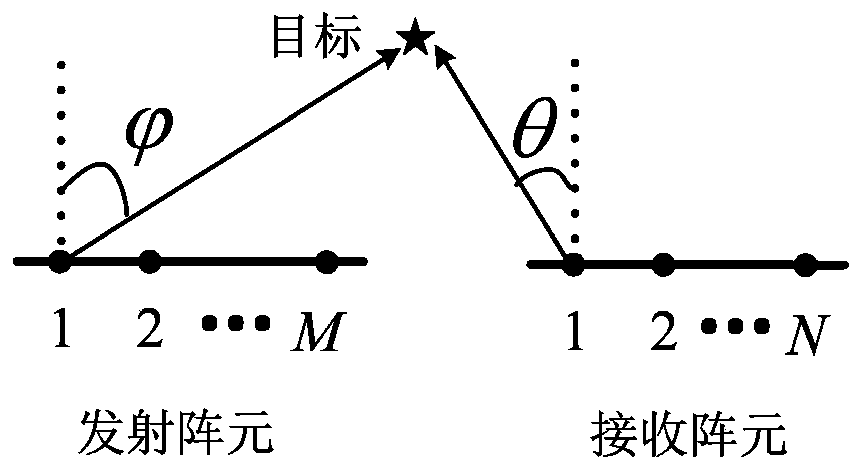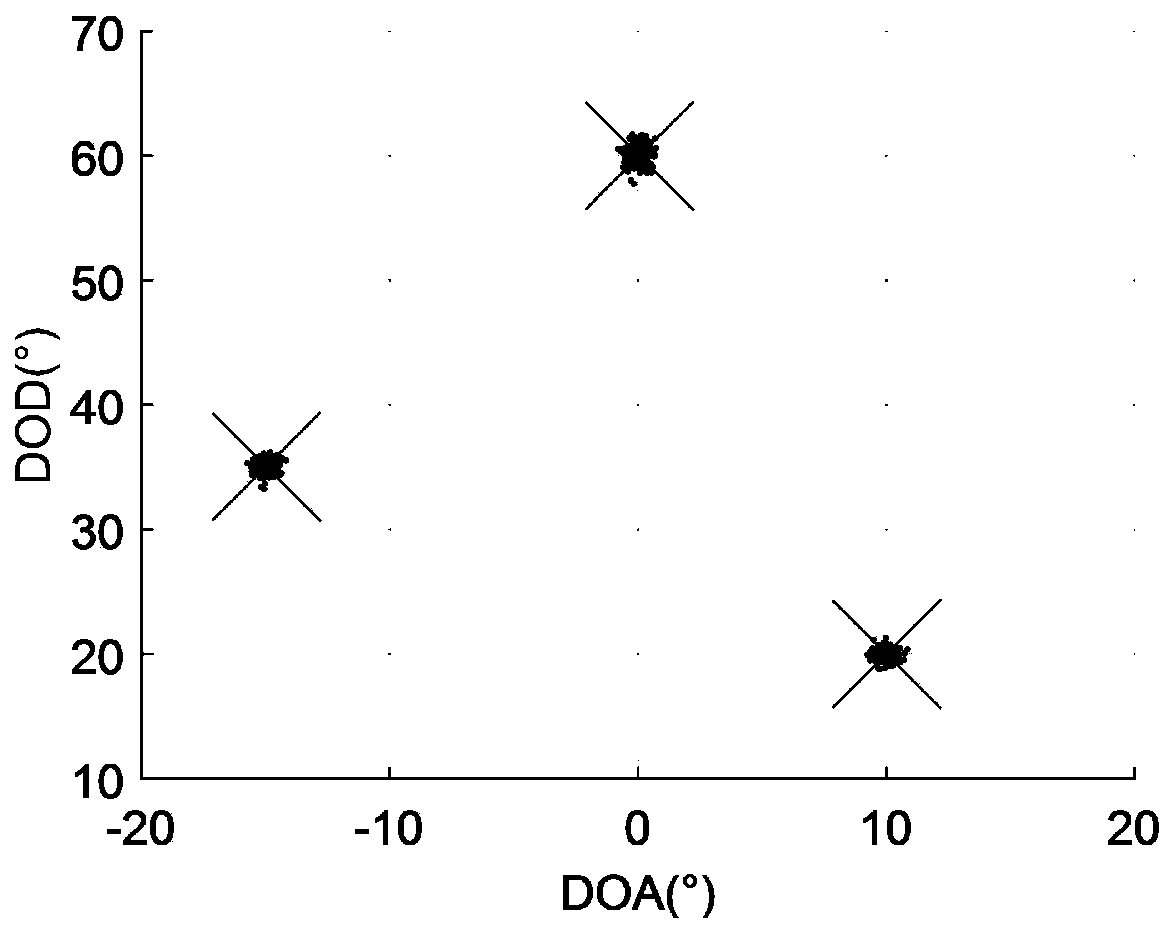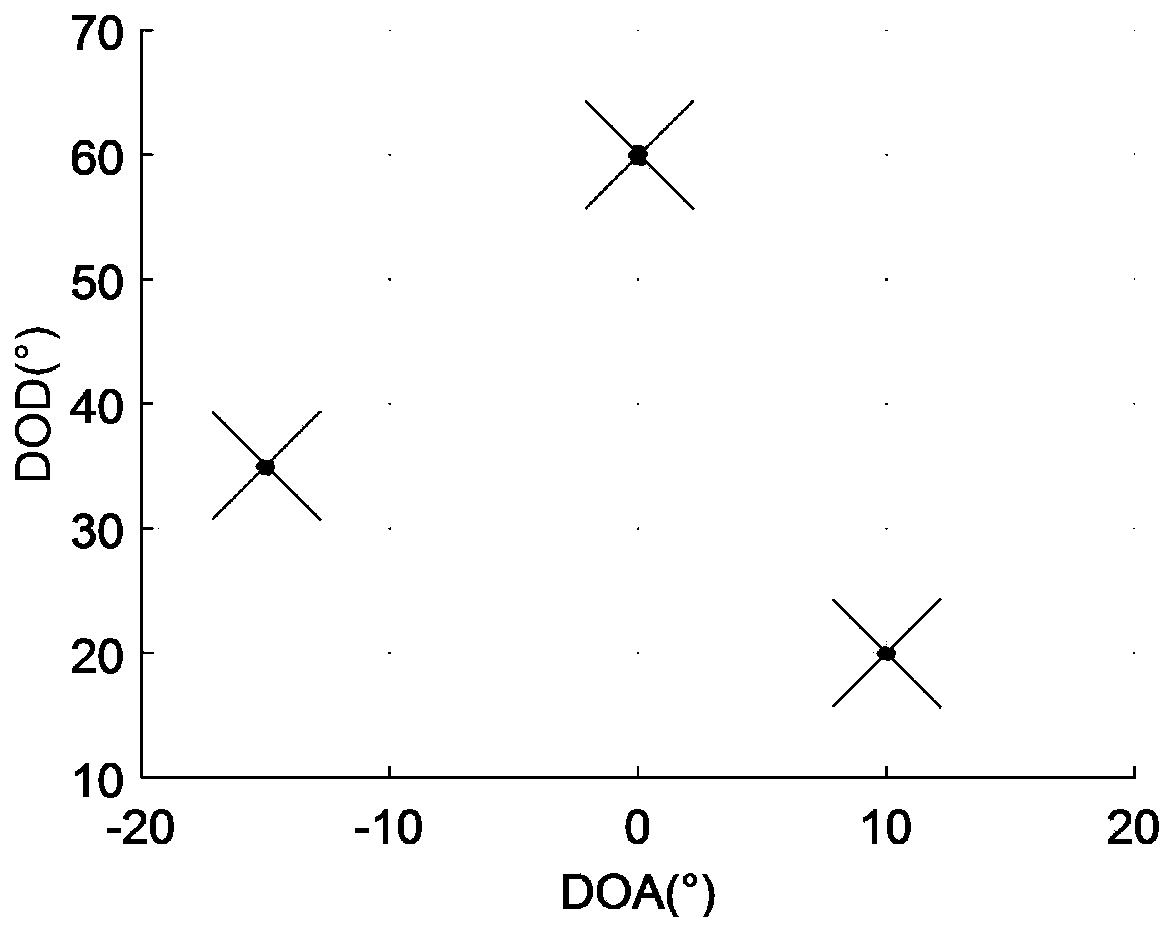Angle estimation algorithm for mimo radar based on tensor quantum space and rotation invariance
A rotation-invariant, angle-estimation technology, applied in the field of MIMO radar angle estimation algorithms, can solve problems such as affecting the accuracy of angle estimation, low computational complexity, and ineffective use of angle-estimated apertures, and achieves high angle-estimation accuracy and computational complexity. low effect
- Summary
- Abstract
- Description
- Claims
- Application Information
AI Technical Summary
Problems solved by technology
Method used
Image
Examples
Embodiment Construction
[0020] In order to make the objectives, technical solutions and advantages of the present invention clearer, the present invention will be described in further detail below in conjunction with the accompanying drawings and embodiments. It should be understood that the specific embodiments described here are only used to explain the present invention and are not intended to limit the invention.
[0021] The present invention provides a MIMO radar angle estimation algorithm based on tensor quantum space and rotation invariance. The MIMO radar angle estimation algorithm based on tensor quantum space and rotation invariance includes the following steps:
[0022] S1. Construct a third-order tensor model of the target echo signal, and construct a high-order covariance tensor model of the received signal through the tensor model structure;
[0023] S2. Perform high-order singular value decomposition on the high-order covariance tensor model, and construct a new signal subspace to obtai...
PUM
 Login to View More
Login to View More Abstract
Description
Claims
Application Information
 Login to View More
Login to View More - R&D
- Intellectual Property
- Life Sciences
- Materials
- Tech Scout
- Unparalleled Data Quality
- Higher Quality Content
- 60% Fewer Hallucinations
Browse by: Latest US Patents, China's latest patents, Technical Efficacy Thesaurus, Application Domain, Technology Topic, Popular Technical Reports.
© 2025 PatSnap. All rights reserved.Legal|Privacy policy|Modern Slavery Act Transparency Statement|Sitemap|About US| Contact US: help@patsnap.com



